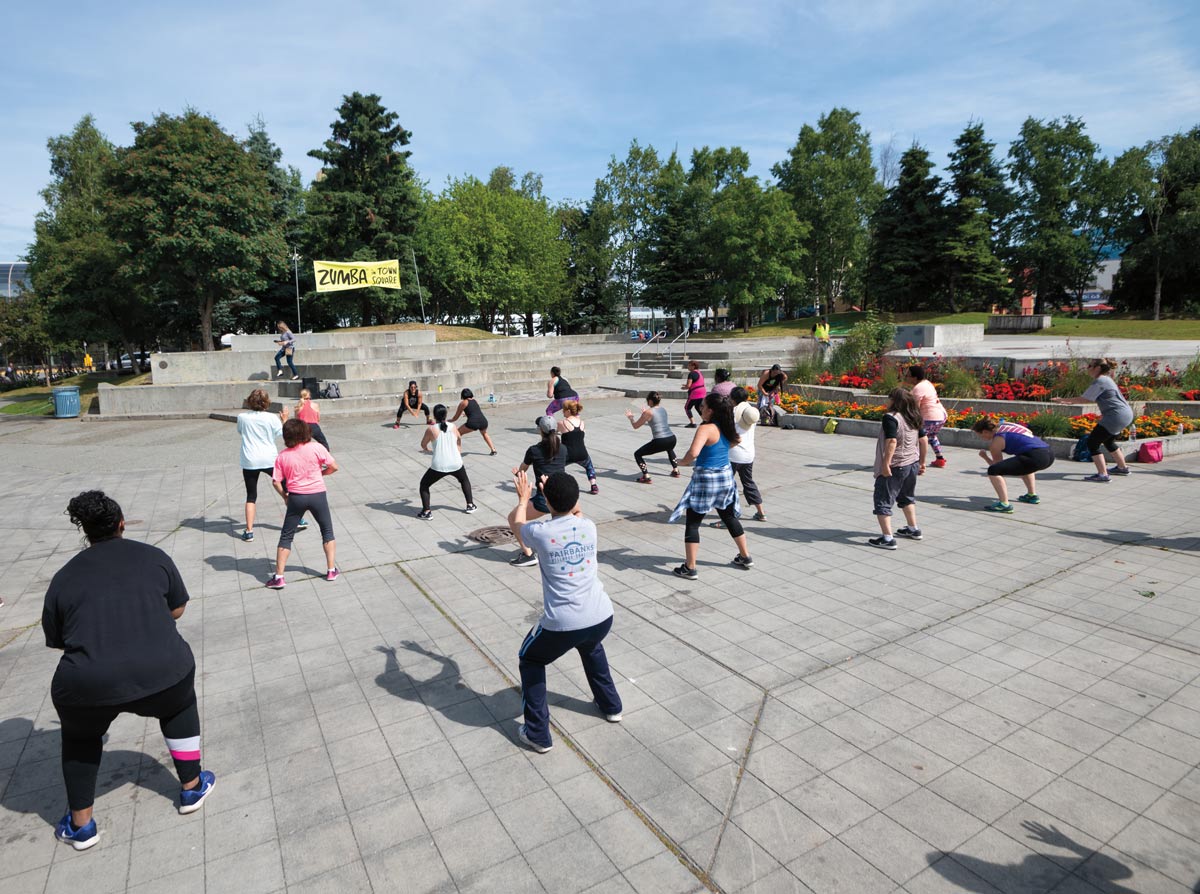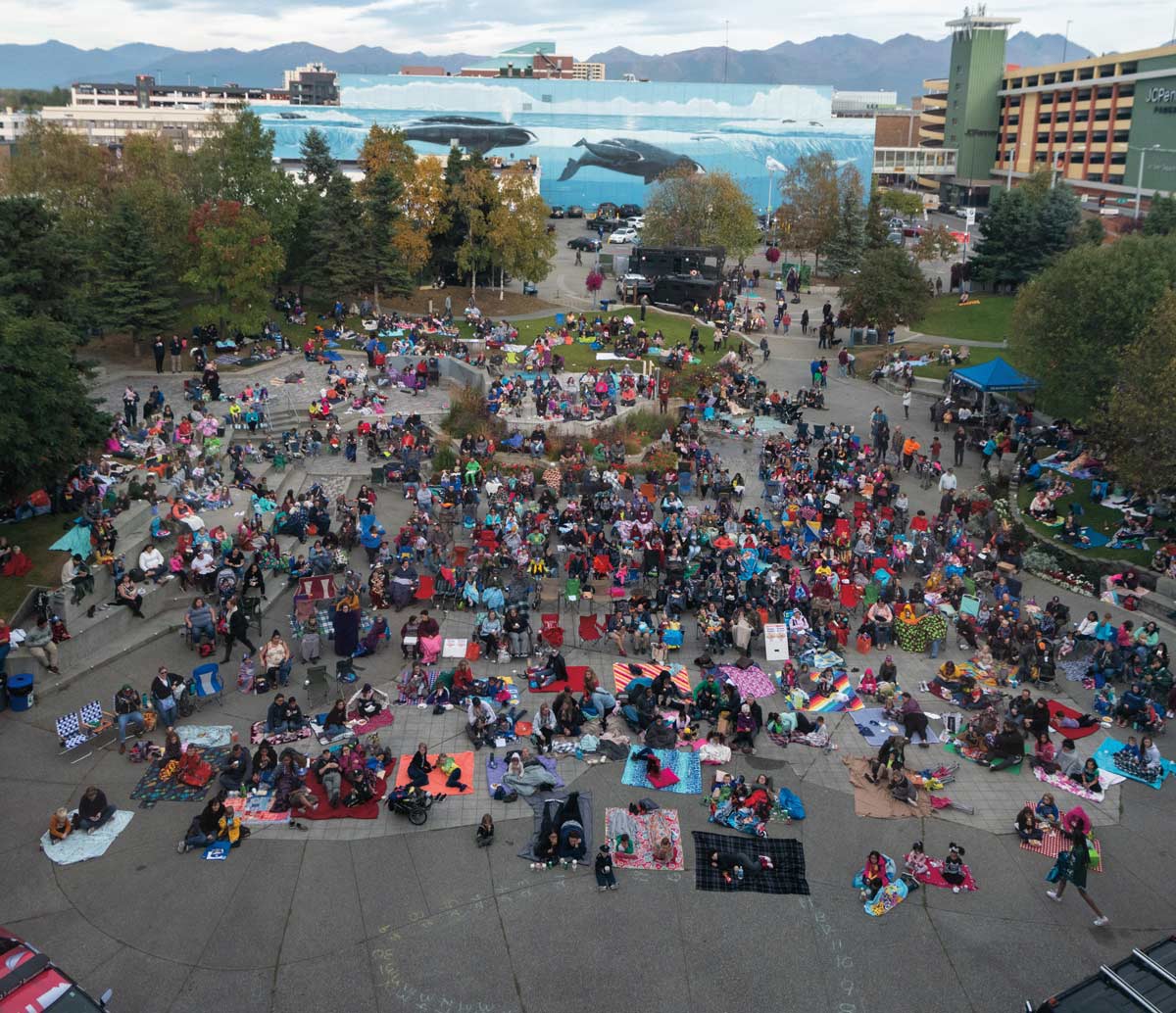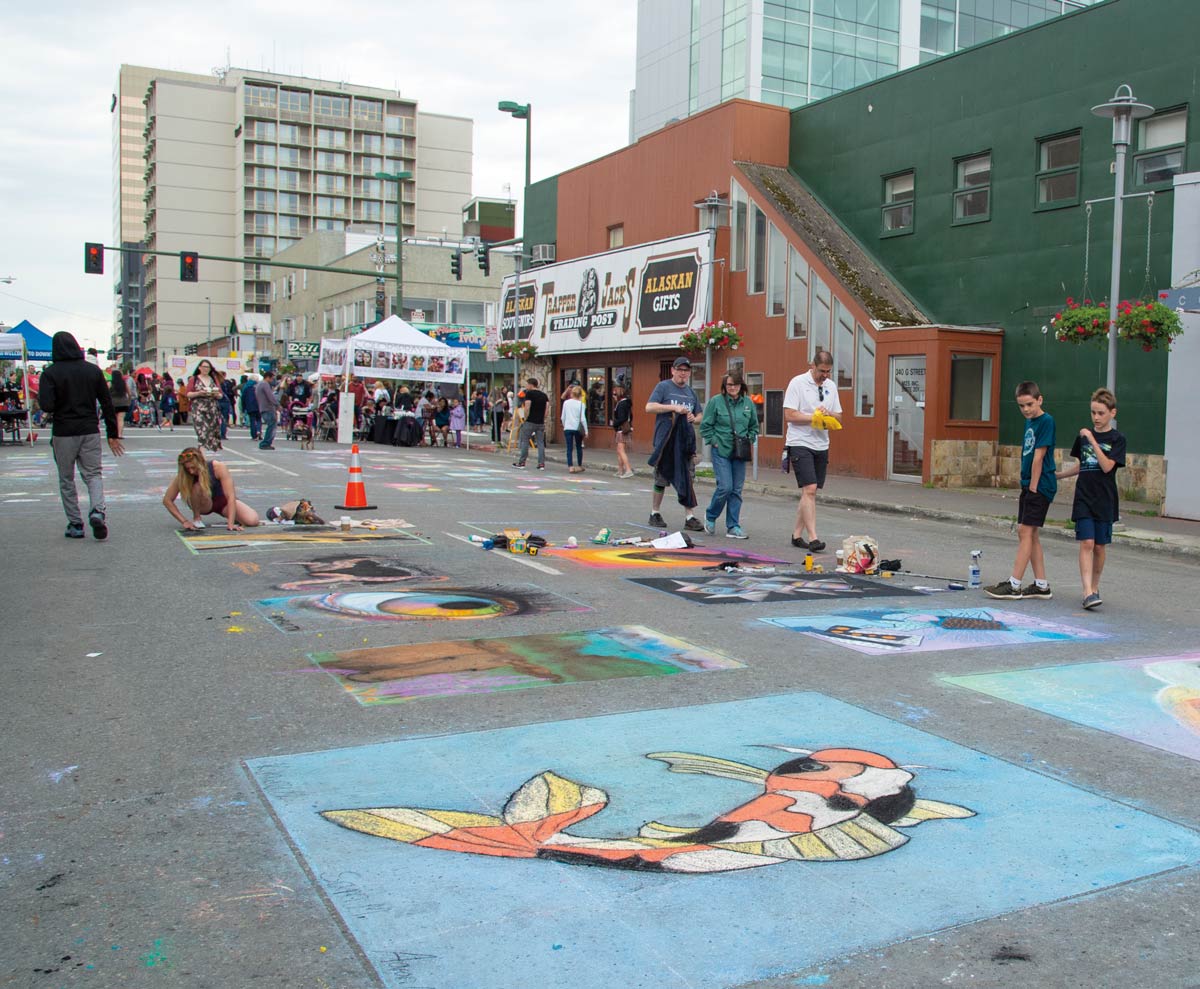Downtown
Downtown
hat do Oklahoma City; Cleveland; Cincinnati; Boise, Idaho; and Bend, Oregon have in common? Visitors to these cities—and the people who live in them—are benefitting from the fact that their downtown areas have undergone a revitalization, attracting businesses, tax dollars, and tourists that contribute to the area’s overall economy.
“When you look at other cities across the US, you can see the rebirth of community and economy that occurs from reinvestment in downtown areas,” explains Bill Popp, president and CEO of the Anchorage Economic Development Corporation. “And it’s not just the downtown area that becomes vital again; we’ve seen in case after case that there is growth in economic activity in outlying areas thanks to a more dynamic downtown core.”
“Getting people and businesses to move to Anchorage is predicated on the community being inviting and attractive to the workforce,” says Popp. “We have been focused on the national talent wars that have been going on for the last five or so years, and we expect things to get even more intense, looking at projections of national labor force shortages in the next decade.”
According to Popp, there are several critical elements that make up a vital downtown. The first is that the city center has a large resident population, which in turn attracts new businesses, such as pharmacies, grocery stores, dry cleaners, and restaurants.
“In the core of downtown Anchorage, there are hundreds of people; not thousands,” says Popp. “Other cities of our size have a population of 5,000 to 10,000 people, so it’s important that we expand our housing opportunities to develop a strong resident population base.”
Mixed-use spaces are also important, such as having a coffee shop or retail business on a ground floor with housing on the upper floors. Downtown cores also need to be walkable and contain cultural elements such as music, art, and nightlife. According to Popp, an “activated” downtown means having something going on for 300 days or more each year.
And of course businesses have their own list of criteria that must be met before they decide to invest in an area that is in the process of being revitalized. These include market opportunities, investment cost, and the ability to attract and retain a workforce.
“Ten years ago, workforce attraction and retention were not even in the top ten of what a business looked at to open or relocate,” says Popp. “Now, if a city can’t offer that, they are not even on a business’ radar.”
In order to attract a viable workforce, downtown areas need to provide not just amenities but affordable and ample housing.
“While living in downtown Anchorage may be desirable, there are not adequate opportunities for people to move here,” says Popp. “The community needs to find ways to incentivize businesses to make it really exciting to create housing downtown. This will bear fruit over the next decade, as young professionals and retirees looking to downsize are searching for walkable, easily accessible neighborhoods.”
Anchorage Downtown Partnership

Anchorage Downtown Partnership
“While Baby Boomers used to go to where the good jobs were, even if the cities weren’t great, Millennials and Gen Xers feel that they have a right to expect more out of their communities,” he says. “They are looking for diverse, welcoming spaces that have great amenities like parks, trails, and outdoor activities; music; art; nightlife; public gathering spaces; and activities nearly every day.
“They are willing to move to a community without a job; if the community is that good, the job will make itself apparent,” he adds. “And it’s working for them.”
“In downtown Anchorage, we’re looking for underused or problem spaces that have fallen by the wayside—places where people may not feel comfortable going—and we’re taking these spaces back,” explains Rosie Frankowski, placemaking coordinator for the Anchorage Downtown Partnership. “We’re creating community gathering places through a number of different methods.”
Anchorage Downtown Partnership

Anchorage Downtown Partnership
Frankowski says placemaking brings in positive energy through activities, programming, and the “creation of space,” using bright colors, art, and flowers to beautify an area.
“You want to make it a place where people want to hang out,” she explains. “In summer 2017, we had 144 activities in Town Square Park happening daily, and it worked amazingly well. We had yard games, small concerts, and buskers performing, as well as a weekly Live after Five program.”
Businesses in the area have seen a positive impact from these events and now partner with Anchorage Downtown Partnership to provide even more programming. A prime example is Wild Scoops, which takes advantage of the busker services launched last year to provide entertainment to customers who are waiting in line for ice cream.
“There’s already a long line there, and now they have Ava Earl from Girdwood playing outside,” says Frankowski. “They’ve made it a space even though it’s a sidewalk. People come for music, ice cream, and just to hang out. It’s a positive, low-cost event that has a big impact.”
While there are not hard numbers, audience surveys filled out after events show that businesses see increased traffic from placemaking activities.
“Our surveys show that between 80 and 90 percent of people who come to a free event stop to eat or purchase something while they’re downtown,” says Frankowski. “Businesses can also use this as an opportunity to showcase what they have to offer; for example, Gelatte gave out free samples at one of our events, and now people are aware that there is a new gelato place in town.”
© Matthew Waliszek | Anchorage Downtown Partnership

© Matthew Waliszek | Anchorage Downtown Partnership
“The first year, there were maybe ten to thirty people at events; at Anchorage Yoga last June, 200 people showed up, which we didn’t expect,” says Frankowski. “Live after Five draws a huge crowd, and the Summer Solstice Festival attracts between 10,000 and 20,000 people. Now we have to prepare for crowds.”
“We couldn’t do the programs we do without partners; for example, The Alaska Club provides instructors at no cost for our Zumba in the Park event,” says Amanda Moser, executive director of Anchorage Downtown Partnership. “We’re really grateful to the Anchorage Police Department for hosting their Coffee with a Cop event in Town Square Park.”
Anchorage Downtown Partnership
“We couldn’t do the programs we do without partners; for example, The Alaska Club provides instructors at no cost for our Zumba in the Park event,” says Amanda Moser, executive director of Anchorage Downtown Partnership. “We’re really grateful to the Anchorage Police Department for hosting their Coffee with a Cop event in Town Square Park.”

Anchorage Downtown Partnership
“We also provide ‘space activation,’ which includes a fleet of events year-round,” she continues. “When people come downtown, they spend money at brick-and-mortar establishments and bring a sense of vibrancy to the area.”
Anchorage Downtown Partnership also provides a voice for downtown and advocates for business owners. “We are consistently sharing information about the downtown community with all of Anchorage, and we make sure to keep our members informed about issues that affect them,” says Moser.
She adds that she has seen interest in downtown increasing, and that can only be good for the community.
“We’re pleased that there’s been a shift in the last couple of years and people have started to become more active,” she says. “I think in some part that’s because of our ambassadors on the street who are out there building relationships. It’s been really positive for the downtown community.”
Anchorage Downtown Partnership
“Fairbanks did have a downtown implementation plan from 2008 to 2011, but it was not implemented,” explains David Van Den Berg, executive director, Downtown Association of Fairbanks. “Our goals to do A, B, or C got derailed by City Hall or the borough; and much of what was in the plan was later defeated or repealed. We supported the repeal with the prospect of the plan being replaced; sixteen months in the making, it is stalled.”
Part of the problem that Fairbanks is facing, according to Van Den Berg, is that there is not one centralized government. The Fairbanks borough has power over zoning and land use downtown, while the city is responsible for day-to-day services like police and snow removal.
© Matthew Waliszek | Anchorage Downtown Partnership

© Matthew Waliszek | Anchorage Downtown Partnership
While there is no plan in place, there are some bright spots when it comes to improving the area. “Downtown Fairbanks has lots of vacant commercial space, so the entry point for the private sector is compelling,” says Van Den Berg. “There has also been a fairly significant program of rebuilding the roadways in downtown; approximately $50 million in state and federal money has been spent on a compact area of downtown for utilities, road surfacing, changes to circulation, and pedestrian facilities.”
In order to make progress, Van Den Berg believes that the city, borough, and other interested parties, including the Downtown Association of Fairbanks and Explore Fairbanks, need to work toward the same goal. He believes this could happen as a result of the Polaris property, an abandoned building that has been vacant for a decade that is now owned by the city.
© Matthew Waliszek | Anchorage Downtown Partnership
“Explore Fairbanks is leading the charge to study a visitor center/performing arts center there, and the borough is responsible for the zoning for construction of these facilities,” he adds. “In the absence of a plan, however, there are no formal incentives or deferrals of property taxes; nothing is codified. Everything is pure market response; Fairbanks is guided by the ‘invisible hand.’”
“We ran a private sector fundraiser and gave money to the city to buy the building,” says Van Den Berg. “To get a grant to abate the building might drive everyone to get with the same program because federal grants or appropriations may want to know what’s coming next before providing funds; demolition dollars may be a part of successor use.
“Explore Fairbanks is leading the charge to study a visitor center/performing arts center there, and the borough is responsible for the zoning for construction of these facilities,” he adds. “In the absence of a plan, however, there are no formal incentives or deferrals of property taxes; nothing is codified. Everything is pure market response; Fairbanks is guided by the ‘invisible hand.’”
“Revitalization isn’t always uprooting or demolition; there is a lot of flat acreage in downtown Anchorage, including parking lots and vacant lots, and there are obsolete buildings that could be candidates for improvement if the owners are interested in upgrading,” says Popp. “There are a lot of ideas percolating that are very interesting in their degree of focus. But it’s still early days.”

© Matthew Waliszek | Anchorage Downtown Partnership
“We’re still in initial conversations with partnering organizations looking for common ground on all of these different aspects,” Popp says. “It’s starting to bear fruit, though we are not at the point to announce significant alignments yet.
“This isn’t something that will happen in weeks or months; it’s based on a ten-year view,” he adds. “But we are making efforts this year to develop that framework in greater detail.” ![]()